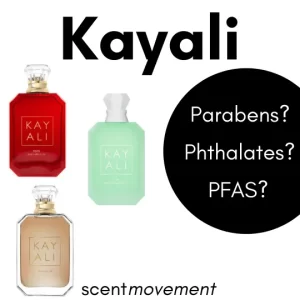
Kayali Perfumes | Parabens? Phthalates? PFAS?
Do Kayali perfumes contain parabens? phthalates? PFAS? We take an in-depth look.

Here at scentmovement,
We have high standards when it comes to perfume – and you should too!
Our mission is to be a voice in changing the perfume industry (hence the name, scentmovement).
The problem: Many perfumes contain potentially harmful ingredients linked to both health and environmental concerns. Perfume manufacturers are not required to disclose what ingredients are in their perfumes.
The good news is we, as consumers, have options. There are plenty of perfume brands that are omitting the ‘bad stuff’ and are providing transparency to consumers. All while making amazing perfumes.
Our mission is to:
Consumers have the power. We are hopeful that the rest of the perfume industry will clean up their act.
Here are 4 ingredients to avoid in perfumes & why:
1. Parabens
Parabens are a commonly used preservative in cosmetics and personal care products to increase their shelf life. However, concerns have been raised regarding their safety, as they have been found to cause allergic reactions and skin rashes in some people. Moreover, parabens have been identified as endocrine disruptors, which means that they can mimic the body’s hormones and interfere with normal hormone function. This is a cause for concern, as endocrine disruptors have been linked to a range of health issues, including developmental and reproductive problems, as well as certain types of cancer. As such, many consumers are now seeking out paraben-free alternatives to reduce their exposure to potentially harmful chemicals.
2. Phthalates
Phthalates are a group of chemicals used in various industries, including the fragrance industry, to enhance the scent and longevity of products. However, there are concerns about the safety of phthalates, particularly as they have been linked to potential health risks. Some studies suggest that phthalates may have endocrine-disrupting effects, interfering with hormones in the body and potentially causing developmental and reproductive issues. There are also concerns about the potential for phthalates to be toxic to the environment, particularly in terms of their impact on aquatic life. As a result, many consumers are now seeking out phthalate-free products, including fragrances, to reduce their exposure to these potentially harmful chemicals.
3. Formaldehyde and Formaldehyde-releasing agents (or donors)
Formaldehyde is a chemical used in many cosmetics as a preservative to prevent bacterial growth and prolong shelf life. However, exposure to formaldehyde can have negative health effects. It is a known carcinogen and can cause irritation, allergic reactions, and respiratory issues. Formaldehyde-releasing preservatives, which break down into formaldehyde over time, can also be a concern. There is a growing demand for formaldehyde-free cosmetics, and many companies have eliminated it from their products due to consumer concerns. It’s important to read product labels and avoid cosmetics that contain formaldehyde or formaldehyde-releasing preservatives to reduce the risk of exposure.
4. PFAS compounds
PFAS (Per- and polyfluoroalkyl substances) are a class of chemicals that have raised concerns due to their potential health and environmental impacts. These chemicals are commonly used in a variety of consumer products, including some cosmetics and personal care items. PFAS have been found to be persistent in the environment and have the ability to accumulate in human bodies over time. Studies have linked exposure to PFAS with a range of health problems, including reproductive and developmental issues, immune system dysfunction, and increased risk of certain cancers. In addition to their potential health impacts, PFAS have also been found to be toxic to aquatic life and other wildlife, raising concerns about their impact on the environment. As a result, there is increasing interest in finding safer alternatives to these chemicals in consumer products, including in perfumes and other personal care items.
Here at scentmovement, we will never recommend a perfume containing any of these ingredients.
Additionally, if sold at either Target, Ulta or Sephora, we will only recommend perfumes that meet their clean beauty standards. Each retailer has their own clean beauty program and labeling. Each one prohibits the use of the 4 ingredients listed above, and then some!
Here’s a list of perfume brands that meet our high standards:
| Abbot NYC |
Billie Eilish |
By Rosie Jane |
Clean Beauty Collective |
Dedcool |
Ellis Brooklyn |
Floral Street |
Good Chemistry |
Henry Rose |
Heretic |
Maison Louis Marie |
Mix Bar |
Nemat |
Pacifica |
Phlur |
Skylar |
The 7 Virtues |

Do Kayali perfumes contain parabens? phthalates? PFAS? We take an in-depth look.
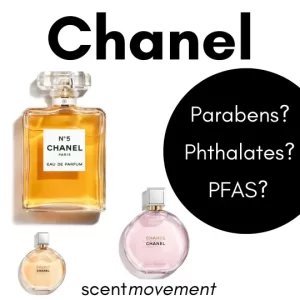
Do Chanel perfumes contain parabens? phthalates? PFAS? We take an in-depth look.
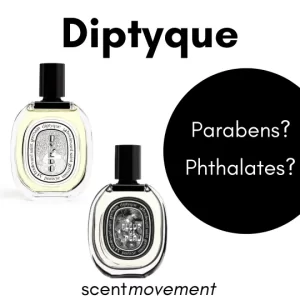
Do Diptyque perfumes contain parabens? Pthalates? Your questions answered here.
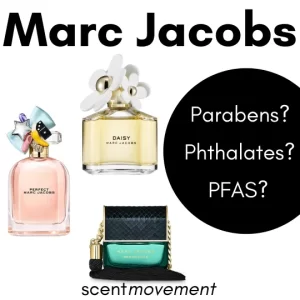
Do Marc Jacobs perfumes contain parabens? phthalates? PFAS? We take an in-depth look.
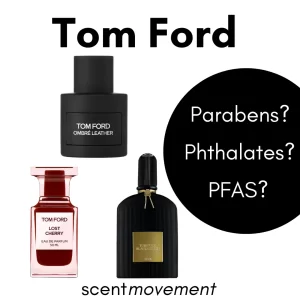
Do Tom Ford’s perfumes contain parabens? phthalates? PFAS? We take an in-depth look.
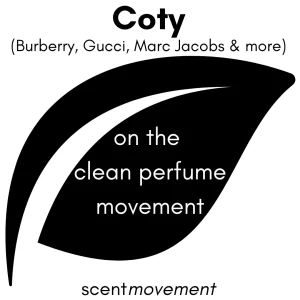
We look at COTY’s most recent reports to see what, if anything, they say on the clean perfume movement.
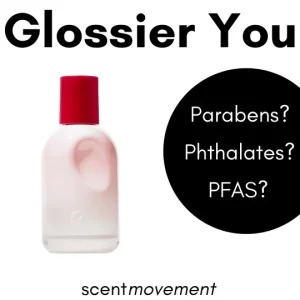
Does Glossier You contain parabens? phthalates? PFAS? We take an in-depth look.
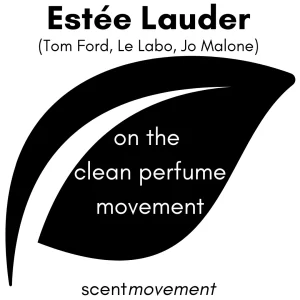
We look at Estée Lauder’s 2022 year-end report to see what, if anything, they say on the clean perfume movement.
or e-mail us! hey@scentmovement.com